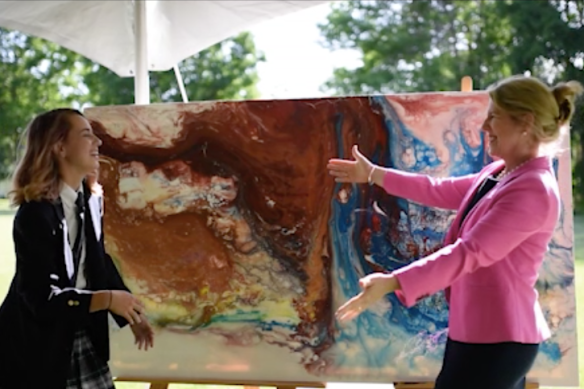On Monday morning, we ran our first ever Chapel service at Lakefield College School by zoom. We weren’t sure how it would go, nor did we know how many would show up. Reading the New York Times article, As School Moves Online, Many Students Stay Logged Out., makes me feel especially grateful to our students – we had over 450 people log in to zoom at 8:30am, and we have 376 students.
Here is the short summary of my message:
Never did I imagine, that we would gather by zoom, and not in our beloved A.W. Mackenzie Chapel.
So here we are, making history.
All of us will have our own distinct feelings about being back together again, here, in this way, in our new virtually shared chapel. For me, I am struck by a range of emotions: happiness to be connecting again – gratitude that everyone showed up! – uncertainty about where we are headed, loss for what we must all leave behind. Fortunately, for me, today, being together again gives me far greater feelings of hope than loss.
But make no mistake, like you, my sense of loss is acute.
I went in the chapel last week and stared at the empty pews and wondered when it would be full again. I felt an incredible sense of loss and miss each of you. I also feel like I am grieving the loss of Regatta Day, Gladiator Day and of course, the likely loss of gathering under the white tent to celebrate our grads. Grads, I am so sorry that this is your year. We will work hard, and consult with you, on how to make up for this. We will celebrate you. We will make a plan.
This morning, I want to focus on what I see happening, some of the positives, so that we will not only survive this pandemic, we will make history together.
One positive is definitely the front-line staff in this pandemic. I hope we all take time to celebrate health care workers around the world. In every pandemic, there are doctors and nurses who respond with unbelievable heroism and compassion, and this is what is happening today. Look them up locally. Here in Peterborough, people make noise during their shift change at 7pm. In Toronto, certain buildings have lit up messages for health care workers. Some of you have parents or relatives or friends who are working through all of this. Today, we thank them. I ask for a moment of silence for those who have passed away from the virus, and for those who are working and putting their own lives at risk, to save lives. [Moment of silence.]
For the rest of us who are not health care workers or on the front line, I want us to ask this question of ourselves: what can I do to make a difference? In what way can I serve?
I believe we are called to serve in three ways, and no Lakefield student will be surprised by my three ways: Ask good questions. Try your best. Be kind.
First – Shout out to Anthony Overing and Ethan Webster. They asked this good question: How can I do a remote chapel talk? They both tried their best and did an incredible job. I loved their advice to get outside and to get a hobby. Watching those chapel talks gave me incredible hope in the future. There was no hug line for either of them, but I felt the love and kindness of our community. Chapel talks are one of those secrets of Lakefield… you have to experience them to understand them. They are “So Lakefield”. Thanks to our grade 12s, we will continue to experience that part of Lakefield, remotely.
My focus this morning is on what it means to be kind, and I hope we think of kindness in two ways – Be kind to yourself. Be kind to others.
How are you being kind to yourself? In particular – How are you being kind to your mind? How are you developing and growing your mind? We can feel overwhelmed by anxiety, fear, and worry in these challenging times, and this is normal. You have a choice to make – get lost in Netflix or social media… or do something more.
This morning, I am asking that you actually take care of your mind and pay attention to your various emotions. Learn more skillful ways to be with difficult emotions. Take time each day to sit quietly and feel your emotions. Or go for a walk. Get outside. Get a new hobby. Write about how you are feeling in a journal or talk about those feelings with a friend or family member. Another strategy to be kind to yourself is to take time to imagine what might happen in the future. My point is that you need to find a way to have a sense of calm and peace. We all need to work on ourselves so we can have an impact on others. Panic is contagious. Calm is contagious too. The world needs a wise, calm person in each home that brings more understanding to these circumstances.
So my first hope is that you take time to be kind to yourself.
My second point is to be kind to others. Connect. Call a friend. Call someone who wouldn’t necessarily get a call. Call your grandparents. Write a note to a classmate. Write a note to whoever made you dinner last night… Notice what others are doing to make your life better, and share that gratitude. Being kind to others actually feels good… gets us out of self-pity.
So my second hope is that you force yourself to be kind to others.
In this difficult time, we all need community more than ever. I am grateful for our Lakefield community.
We are making history. We are Lakefield. We got this.








